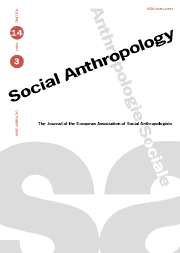No CrossRef data available.
Translocal cultures: The slave trade and cultural transfer in the Cross River region
Published online by Cambridge University Press: 24 February 2006
Abstract
The transatlantic slave trade did not simply produce a history of dislocation and disruption in Africa. In the Cross River region, trade simultaneously inspired cultural innovation and transregional exchange. This contributed to the creation and dissemination of numerous associations and cult agencies. Not only did freemen own such institutions but also their slaves who had taken the knowledge of them along from their Grassfields homes. This paper explores the dissemination histories of some of these institutions as well as the relationship and mutual fears of both the slaves and their masters. While associations and cult agencies of the latter continue to be prominent in the Cross River region, the slaves institutions have largely disappeared.
- Type
- Research Article
- Information
- Copyright
- Cambridge University Press 2006




